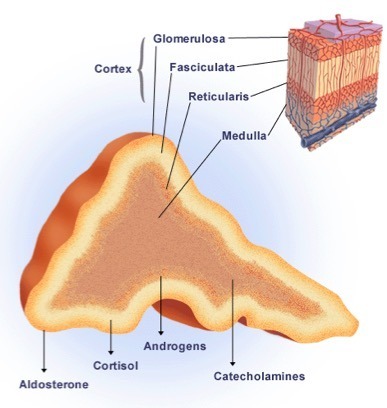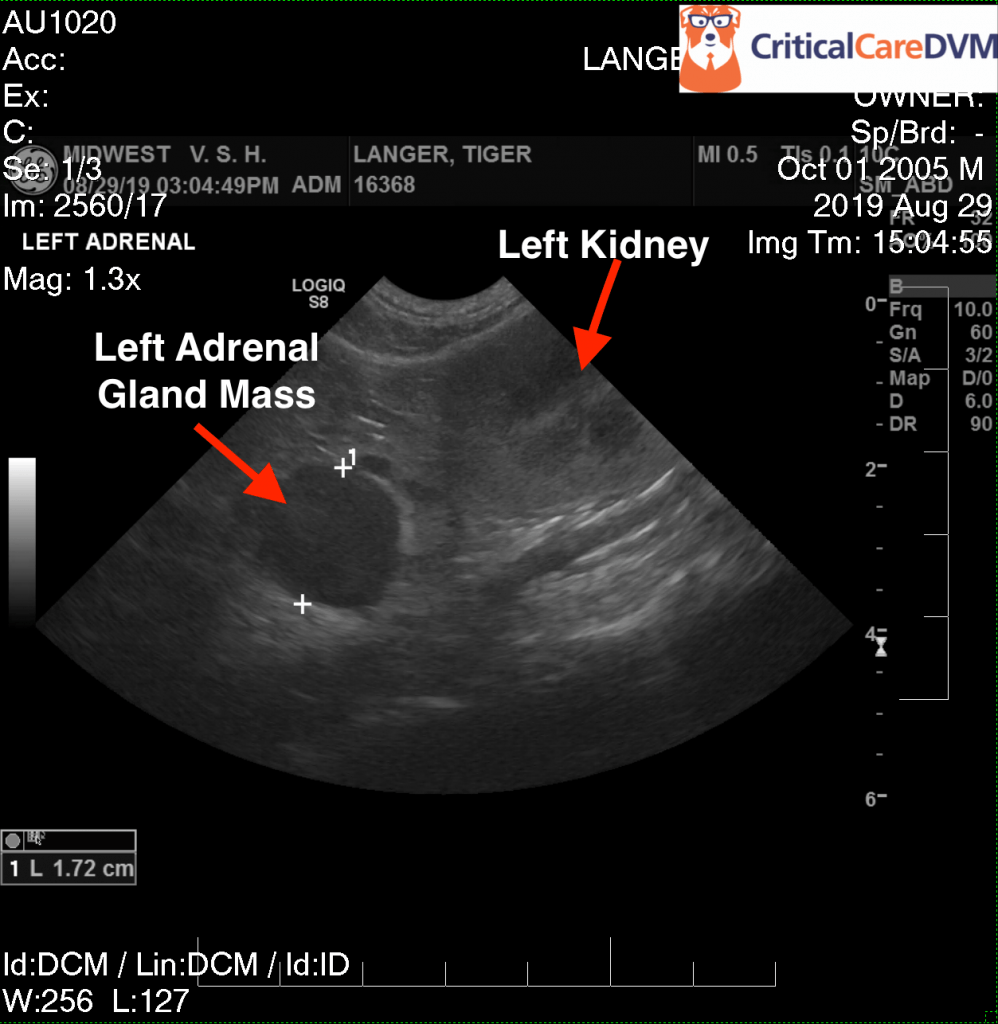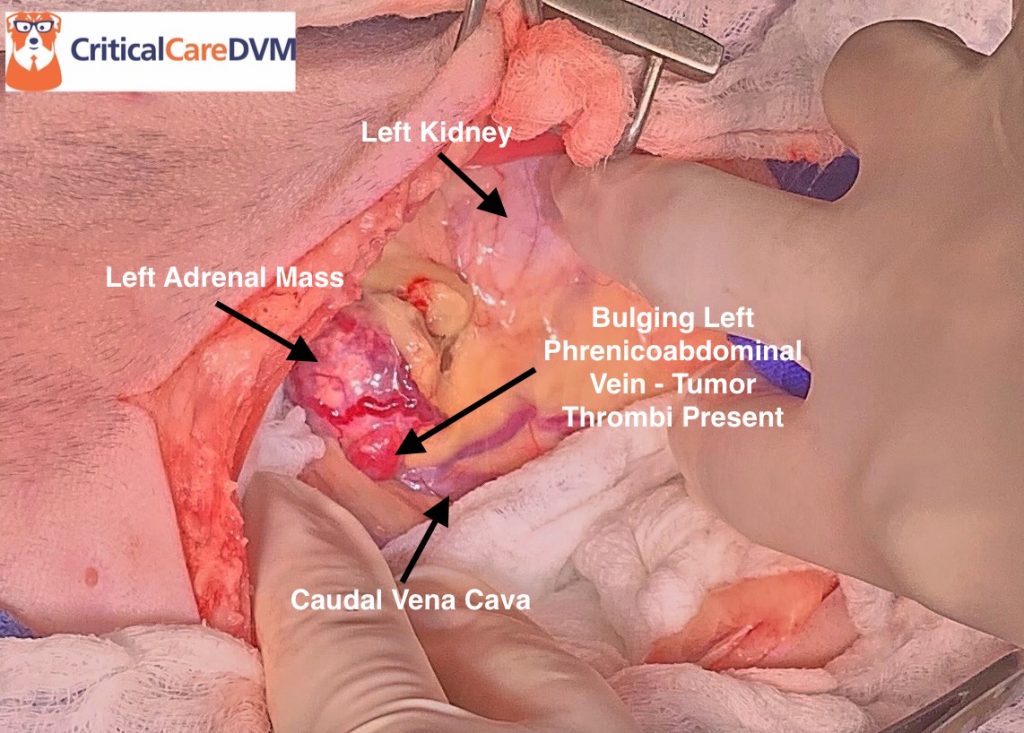Potassium is a uniquely important electrolyte involved in a myriad of essential cellular functions throughout the body. Derangements of potassium, both elevations and decreases, are quite commonplace. Perhaps most commonly, potassium decreases in cats with chronic kidney disease (CKD). An under-recognized cause of hypokalemia (low potassium) is primary hyperaldosteronemia. This week’s post is dedicated to increasing awareness of this disease so I hope you find it interesting. Happy reading!

What is primary hyperaldosteronemia?
Aldosterone is a hormone produced by the adrenal glands. It regulates concentrations of both sodium and potassium in the body. When potassium levels increase, the zona glomerulosa of the adrenal cortex secretes aldosterone. Similarly, aldosterone secretion is also triggered by a drop in blood pressure and a subsequent series of hormonal interactions involving the kidneys, liver, lungs, and adrenal glands.

Excess production of aldosterone may be primary or secondary. Primary hyperaldosteronemia occurs when one or both adrenal glands autonomously secrete too much aldosterone. There is typically solitary mass associated with one adrenal gland that can be malignant or benign. This condition is often called Conn’s disease after the human physician who first recognized it in 1955. Secondary hyperaldosteronemia occurs when another disease process (i.e. congestive heart failure, CKD) stimulates the adrenal glands to secrete aldosterone.
Excess aldosterone production and secretion causes sodium and water retention, potassium loss, and hypertension (high blood pressure). Primary hyperaldosteronemia is ofter under-recognized because progression of CKD – a much more common disorder – is also commonly associated with high blood pressure and/or low blood potassium concentrations.
What does it look like?
There is no sex or breed predisposition for primary hyperaldosteronemia. Most affected are older than 10 years of age with a mean age of 12-13 years. The most common clinical signs are due to hypokalemic polymyopathy. As mentioned earlier, potassium is essential for a plethora of cellular functions, including those in muscles.

When potassium is too low, common clinical signs include:
- Cervical ventroflexion (inability to lift head up)
- Pelvic limb weakness
- Difficulty jumping
- Lethargy / listlessness
- Ataxia (unsteadiness while walking)
Other clinical signs are attributed to an affected cat’s hypertension, including acute blindness, acute change of eye color, and mentation changes. Other potential signs including increased thirst & frequency of urination (20%), decreased appetite (20%), increased appetite (10%), and weight loss.
How is it diagnosed?
After reviewing a pet’s complete medical history, a veterinarian will initially perform a thorough physical examination. Some non-invasive blood/urine tests and diagnostic imaging will be recommended, including:
- Complete blood count
- Serum biochemical profile
- Urinalysis
- Blood pressure
- Abdominal sonography
- Serum aldosterone level
- Chest radiographs (x-rays)
Pet owners may find it helpful to partner with a board-certified veterinary internal medicine specialist to develop a logical and cost-effective diagnostic plan.

How is it treated?
Removal of an adrenal tumor is the treatment of choice for cats with primary hyperaldosteronemia. Adrenal gland surgery is intricate and complicated. Possible peri-operative complications include:
- Bleeding
- Lethargy
- Anemia
- Reduced (or loss of) appetite
- Vomiting
- Elevated body temperature
- Upper respiratory tract infection
- Acute kidney injury
When complications aren’t encountered peri-operatively, cats generally have excellent long-term prognoses. As such, pet owners are encouraged to consult with a board-certified veterinary surgeon. Some cats – for a variety of reasons – are not candidates for surgery; additionally, some families choose not to pursue surgery for their cats. For these patients medically management with potassium supplementation and control of hypertension can be attempted.

The take-away message about primary hyperaldosteronemia in cats…
Primary hyperaldosteronemia is an under-recognized cause of low potassium and hypertension in cats. Diagnosis is based on consistent history and clinical signs combined with confirmatory diagnostic tests. Surgery is the recommended treatment, but some patients may be medically managed chronically.
To find a board-certified veterinary internal medicine specialist, please visit the American College of Veterinary Internal Medicine.
To find a board-certified veterinary surgeon, please visit the American College of Surgeons.
Wishing you wet-nosed kisses,
CriticalCareDVM


